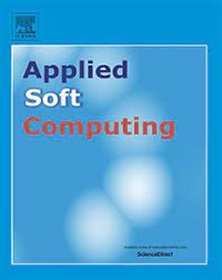A multi-branch attention coupled convolutional domain adaptation network for bearing intelligent fault recognition under unlabeled sample scenarios
IF 7.2
1区 计算机科学
Q1 COMPUTER SCIENCE, ARTIFICIAL INTELLIGENCE
引用次数: 0
Abstract
Bearing intelligent fault recognition is important to maintain the healthy and stable operation of mechanical equipment. However, it is difficult to have a consistent distribution of the acquired source and target domain data due to the constantly changing operating state of the equipment. Moreover, the acquisition of sufficient labeled data is constrained by both time and economic costs. Most of the existing recognition methods are difficult to perform effective fault recognition when faced with inconsistent data distribution and unlabeled small sample data. To address these issues, this paper proposes a multi-branch attention coupled convolutional domain adaptation network (MACCDAN) for unsupervised cross-domain fault recognition, which contains three unique parts. A cross-attention coupled module (CACM) is firstly designed between two parallel feature extraction branches to guide the intertwined coupling of the two branch features through a dual synergetic attention mechanism. A global feature aggregation module (GFAM) is further presented to conduct the global information fusion, which integrates the dependencies between different branch features and enhances the perception of key features. Additionally, the maximum-similarity minimum-discrepancy adversarial loss (MSMDAL) is formulated as an optimization objective to reduce the discrepancy between the source and target domain, and promote the learning of domain-invariant and discriminative features. The results of the four performance evaluation metrics (i.e., accuracy, precision, recall and F1 score) of the proposed method are all 1.0000 on two datasets. The F1 score of the proposed method is improved by at least 0.03 compared to other methods.
求助全文
约1分钟内获得全文
求助全文
来源期刊

Applied Soft Computing
工程技术-计算机:跨学科应用
CiteScore
15.80
自引率
6.90%
发文量
874
审稿时长
10.9 months
期刊介绍:
Applied Soft Computing is an international journal promoting an integrated view of soft computing to solve real life problems.The focus is to publish the highest quality research in application and convergence of the areas of Fuzzy Logic, Neural Networks, Evolutionary Computing, Rough Sets and other similar techniques to address real world complexities.
Applied Soft Computing is a rolling publication: articles are published as soon as the editor-in-chief has accepted them. Therefore, the web site will continuously be updated with new articles and the publication time will be short.
 求助内容:
求助内容: 应助结果提醒方式:
应助结果提醒方式:


